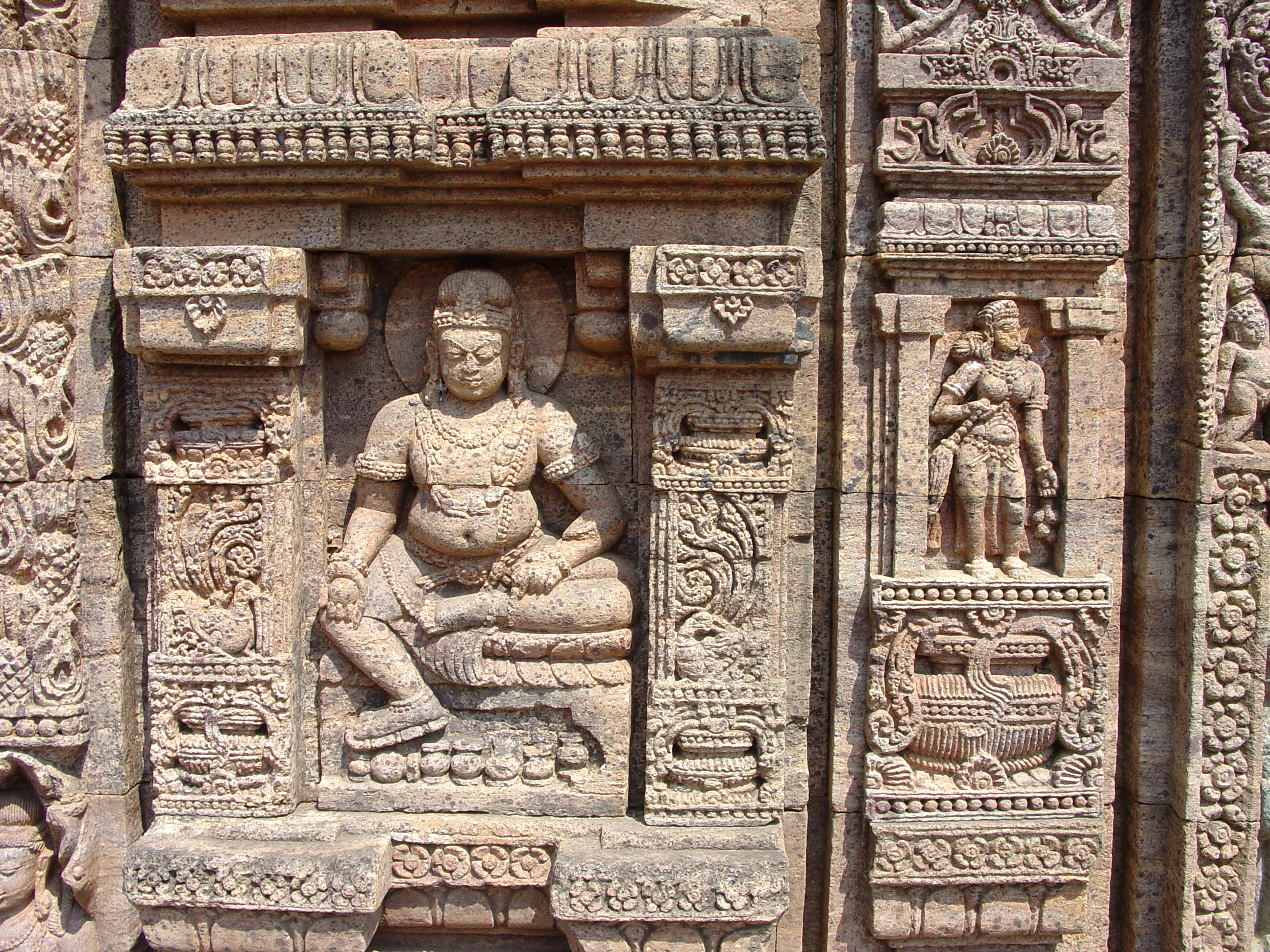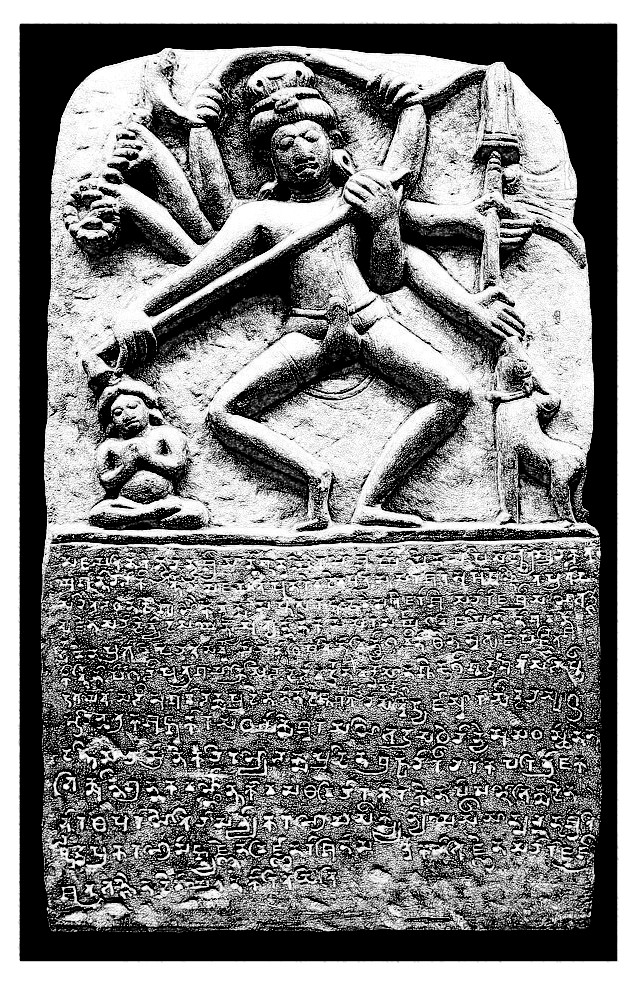 |
Kalinga Script
The Kalinga script or Southern Nagari is a Brahmic script used in the region of what is now modern-day Odisha, India and was primarily used to write Odia language in the inscriptions of the kingdom of Kalinga (historical kingdom), Kalinga which was under the reign of early Eastern Ganga dynasty. By the 12th century, with the defeat of the Somavamshi dynasty by the Eastern Ganga monarch Anantavarman Chodaganga and the subsequent reunification of the Trikalinga(the three regions of ancient Odra- Kalinga, Utkala and Dakshina Koshala) region, the Kalinga script got replaced by the Siddhaṃ script-derived Proto-Oriya script which became the ancestor of the modern Odia script. Early Kalinga type/ Kalinga Brahmi The Hathigumpha inscription at Udayagiri and Khandagiri Caves, Udayagiri caves in Bhubaneswar is written in the deep-cut Brahmi script which is also known as Early Kalinga Type. The Ashoka inscriptions, other inscriptions and fragments of broken pottery from South India are re ... [...More Info...] [...Related Items...] OR: [Wikipedia] [Google] [Baidu] |
|
Abugida
An abugida (; from Geʽez: , )sometimes also called alphasyllabary, neosyllabary, or pseudo-alphabetis a segmental Writing systems#Segmental writing system, writing system in which consonant–vowel sequences are written as units; each unit is based on a consonant letter, and vowel notation is secondary, similar to a diacritical mark. This contrasts with a full alphabet, in which vowels have status equal to consonants, and with an abjad, in which vowel marking is absent, Abjad#Impure abjads, partial, or optional – in less formal contexts, all three types of the script may be termed "alphabets". The terms also contrast them with a syllabary, in which a single symbol denotes the combination of one consonant and one vowel. Related concepts were introduced independently in 1948 by James Germain Février (using the term ) and David Diringer (using the term ''semisyllabary''), then in 1959 by Fred Householder (introducing the term ''pseudo-alphabet''). The Ethiopian Semitic langu ... [...More Info...] [...Related Items...] OR: [Wikipedia] [Google] [Baidu] |
|
 |
Somavamshi Dynasty
The Somavamshi (IAST: Somavaṃśī, "Lunar dynasty") or Keshari (IAST: Keśarī) dynasty ruled parts of present-day Odisha in eastern India between the 9th and the 12th centuries. Their capitals included Yayatinagara (modern Binika, Binka) and Abhinava-Yayatinagara (modern Jajpur). The Somavanshi, Somavamshis may have been related to the Panduvamshis of Dakshina Kosala, Panduvamshis, who ruled the Dakshina Kosala region in central India. They were probably driven out from this region by the Kalachuris of Tripuri, Kalachuris, following which they conquered the Kalinga (historical region), Kalinga and the Utkala kingdom, Utkala regions in present-day Odisha, supplanting the Bhauma-Kara dynasty, Bhauma-Karas. The Somavamshis introduced a new style of art and architecture in Odisha, and their rule saw a remarkable shift from Buddhism to Hinduism in the region. The Somavamshi rule ended in the early 12th century, when the Eastern Ganga dynasty, Eastern Ganga ruler Anantavarman Choda ... [...More Info...] [...Related Items...] OR: [Wikipedia] [Google] [Baidu] |
|
Brahmic Scripts
The Brahmic scripts, also known as Indic scripts, are a family of abugida writing systems. They are used throughout South Asia, Southeast Asia and parts of East Asia. They are descended from the Brahmi script of ancient India and are used by various languages in several language families in South Asia, South, East Asia, East and Southeast Asia: Indo-Aryan languages, Indo-Aryan, Dravidian languages, Dravidian, Tibeto-Burman languages, Tibeto-Burman, Mongolic languages, Mongolic, Austroasiatic languages, Austroasiatic, Austronesian languages, Austronesian, and Tai languages, Tai. They were also the source of the Collation, dictionary order (''gojūon'') of Japanese language, Japanese ''kana''. History Brahmic scripts descended from the Brāhmī script, Brahmi script. Brahmi is clearly attested from the 3rd century BCE during the reign of Ashoka, who used the script Edicts of Ashoka, for imperial edicts. Northern Brahmi gave rise to the Gupta script during the Gupta period, w ... [...More Info...] [...Related Items...] OR: [Wikipedia] [Google] [Baidu] |
|
 |
Ratnagiri, Odisha
Ratnagiri (Odia language, Odia: ରତ୍ନଗିରି, meaning "hill of jewels") is the site of a ruined mahavihara, once the major Buddhist monastery in modern Odisha, India. It is located on a hill between the Brahmani and Birupa rivers in Jajpur district. It is close to other Buddhist sites in the area, including Lalitgiri, Lalitagiri and Udayagiri, Odisha, Udayagiri, and from the state capital Bhubaneswar and 70km from the former state capital Cuttack. The Buddhist monuments were constructed from the 5th century CE onwards, with the last work in the 13th century, and the peak period of work done between the 7th to 10th centuries. After perhaps the 16th century the site ceased to be used and fell into ruins. These were little known until the 1960s when major excavations by the Archaeological Survey of India ("ASI") revealed the site, producing large quantities of very fine sculpture. Monastery 1 has been described as "the finest in terms of carved stone decoration to hav ... [...More Info...] [...Related Items...] OR: [Wikipedia] [Google] [Baidu] |
|
Devanagari
Devanagari ( ; in script: , , ) is an Indic script used in the Indian subcontinent. It is a left-to-right abugida (a type of segmental Writing systems#Segmental systems: alphabets, writing system), based on the ancient ''Brāhmī script, Brāhmī'' script. It is one of the official scripts of India, official scripts of India and Nepal. It was developed in, and was in regular use by, the 8th century CE. It had achieved its modern form by 1000 CE. The Devanāgarī script, composed of 48 primary characters, including 14 vowels and 34 consonants, is the fourth most widely List of writing systems by adoption, adopted writing system in the world, being used for over 120 languages, the most popular of which is Hindi (). The orthography of this script reflects the pronunciation of the language. Unlike the Latin alphabet, the script has no concept of letter case, meaning the script is a unicase, unicameral alphabet. It is written from left to right, has a strong preference for symmetri ... [...More Info...] [...Related Items...] OR: [Wikipedia] [Google] [Baidu] |
|
 |
Satrubhanja
Satrubhanja (Odia language, Odia : ଶତ୍ରୁଭଞ୍ଜ) was a king who belonged to the Vindhyatabi branch of Nagas of Padmavati, Nagavanshi rulers that ruled from Keonjhar district of Odisha in the early 4th century CE (possibly between 261 CE to 340 CE). The era of Satrubhanja belongs to the pre Gupta Empire, Gupta rise as an imperial power in India when the other ruling of India joined hands with his leadership to overthrow the ruling Kushan Dynasty, Devaputras of Pataliputra, also otherwise known as Kushan rulers to the modern historians. The Asanapat village dancing Nataraja Shiva inscription in Sanskrit Language with Post Brahmi or early Kalinga script of Satrubhanja provides a great deal of details about his achievements as a conqueror and spiritual man. The inscription is of thirteen lines which is written partly in verse and partly in prose. Naga rule in Odisha The Nagas of Padmavati, Naga clan ruled most of central and northern India during the 2nd Century A.D ... [...More Info...] [...Related Items...] OR: [Wikipedia] [Google] [Baidu] |
|
Kharvel
Kharavela was the emperor of Kalinga (present-day eastern coast of India) in the 2nd or 1st century BC. The primary source for Kharavela is his rock-cut Hathigumpha inscription. The inscription is undated, only four of its 17 lines are completely legible, others unclear, variously interpreted and disputed by scholars. The inscription written with Jainism-related phrases recites a year by year record of his reign and panegyrically credits him with public infrastructure projects, welfare activities, patronage of the arts, and many military victories. Historians agree that it is best and most complete biography of Kharavela available. He was a follower of Jainism. Background Sources Much of the available information about Kharavela comes from the undated, much damaged Hathigumpha inscription and several minor inscriptions found in the Udayagiri and Khandagiri Caves in present-day Odisha. The Hathigumpha inscription records Kharavela's life until his 38th year, including 13 ye ... [...More Info...] [...Related Items...] OR: [Wikipedia] [Google] [Baidu] |
|
 |
VIKRAMKHOL INSCRIPTION
Vikramkhol or Bikramkhol cave is a prehistoric archaeological site known for prehistoric inscriptions. Location Vikramkhol cave is located near Jharsuguda, Odisha, India and lies in Reserved Forest of Belpahar range, at a distance of 12 km from Belpahar. Inscriptions The inscriptions at Vikramkhol cave are written on an uneven rock surface in a natural rock shelter using red Ochre paint which is later incised into the rock. The inscriptions were discovered around the 1930s and first studied by Dr K P Jayaswal. who tentatively dates it to 1500 BC. There are two theories regarding the inscription – one declares it a writing, while others doubt it as a rock art and nonliterate rock carvings. Theory of literate script According to Jayaswal, the prehistoric scribblings at Vikramkhol represent a picto-syllabic writing system which represents a mixture of Harappan and Brahmi hence forming a connection between the two. The inscribed portion covers an area of 35 feet by 7 feet ... [...More Info...] [...Related Items...] OR: [Wikipedia] [Google] [Baidu] |
|
Odia Lipi-1 Copy
Odia, also spelled Oriya or Odiya, may refer to: * Odia people in Odisha, India * Odia language, an Indian language, belonging to the Indo-Aryan branch of the Indo-European language family * Odia alphabet, a writing system used for the Odia language ** Oriya (Unicode block), a block of Odia characters in Unicode * Odia (name), including a list of people with the name See also * * * Odisha (other) * Orissa (other) Orissa is the former name of the state of Odisha in India. Orissa may also refer to: Places * Orissa Subah, a Mughal imperial province * Bihar and Orissa Province, a province of British India from 1912 to 1936 * Orissa Province, a province of ... {{Disambiguation Language and nationality disambiguation pages ... [...More Info...] [...Related Items...] OR: [Wikipedia] [Google] [Baidu] |
|
 |
Udayagiri And Khandagiri Caves
Udayagiri and Khandagiri caves, formerly called Kattaka Gumpha or Cuttack caves, are partly natural and partly artificial caves of archaeological, historical and religious importance 3 km south of the city of Bhubaneswar in Odisha, India. The caves are situated on two adjacent hills, Udayagiri and Khandagiri mentioned as ''Kumari Parvata'' in the Hathigumpha inscription. They have a number of finely and ornately carved caves built during the 1st century BCE. It is believed that most of these caves were carved out as residential blocks for Jain monks during the reign of King Kharavela. Udayagiri means "Sunrise Hill" and has 18 caves while Khandagiri has 15 caves. The caves of Udayagiri and Khandagiri, called ''lena'' or ''leṇa'' in the inscriptions, were taken out mostly during the reign of Kharavela for the abode of Jain ascetics. The most importance of this group was Ranigumpha in Udayagiri which is a double storeyed monastery. Other important caves include Hathi ... [...More Info...] [...Related Items...] OR: [Wikipedia] [Google] [Baidu] |
|
Hathigumpha Inscription
The Hathigumpha Inscription (pronounced: ɦɑːt̪ʰiːgumpʰɑː) is a seventeen line inscription in a Prakrit language incised in Brahmi script in a cavern called Hathigumpha in Udayagiri hills, near Bhubaneswar in Odisha, India. Dated between the second century BCE and the first century CE, it was inscribed by the Jain king Kharavela of the Kalinga kingdom. The Hathigumpha Inscription presents, among other topics, a biographical sketch of a king in the eastern region of ancient India (now part of and near Odisha). It also includes information on religious values, public infrastructure projects, military expeditions and their purposes, society and culture. Paleographically, the inscription dates from the middle of the first century BCE to the early first century CE. Location and history The Hathigumpha inscription () of Kharavela is found at Udayagiri, about west of Bhubaneswar international airport. The Udayagiri hills host many ancient rock-cut caves such as the Rani ... [...More Info...] [...Related Items...] OR: [Wikipedia] [Google] [Baidu] |